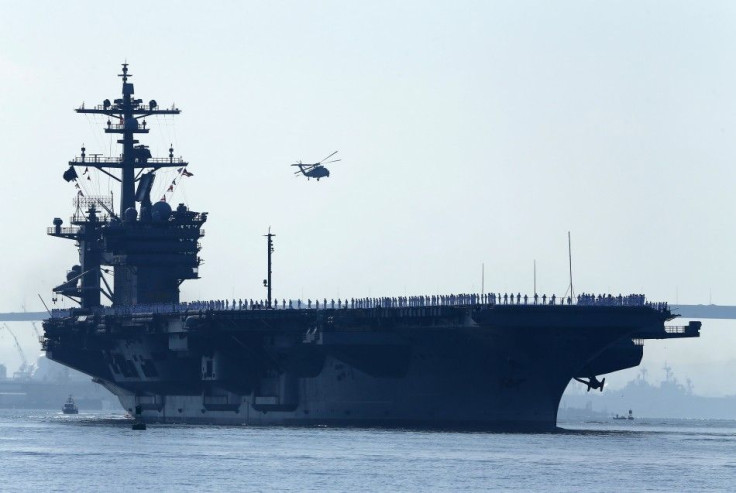China Building Trio of Large Nuclear-Powered Aircraft Carriers Similar To US’ Nimitz, Ford-Class Carriers -- Report

China is reportedly developing three large nuclear-powered aircraft carriers, the designs of which were found similar to the Nimitz- and Ford-class carriers of the United States.
Andrew S Erickson, an Associate Professor from the Strategic Research Department at the US Naval War College, in his article for the National Interest magazine, said he encountered the designs of the three models of aircraft carriers on the website of Jinshuai Model Crafts. The latter is based in Zhanjiang in Guangdong province. Its location is also close to the headquarters of the PLA Navy's South Sea Fleet, according to Want China Times.
The report mentioned specifications were seen on the website relative to the designs of putative hulls 17, 18 and 19. Suffice to say, the three aircraft carriers are being built domestically by China, unlike its first carrier, CV16, more known as the Liaoning. The latter, purchased from Ukraine as the hulk of the Soviet-era carrier Varyag, was just refitted for service. It was commissioned in 2012.
That China is building a trio of large nuclear-powered aircraft carriers somehow confirms the government listened to advises of military experts that the country "needs at least three carriers to form a basic battle force," The Hindu reported, citing Global Times. Erickson said China built the Liaoning merely only as a training center. Du Wenlong, a fellow at the People's Liberation Army (PLA) Academy of Military Science Research, said earlier the trio of large nuclear-powered aircraft carriers makes for a perfect number because "one is always available for operational missions, while the second is used for training and the third is resupplied and retrofitted."
Erickson said the design of CV-17 model still bore some characteristics from Liaoning. But CV-18 and CV-19 were completely different. Upon closer scrutiny, he said the latter two looked similar to the Nimitz-class or Ford-class nuclear-powered aircraft carriers of the US Navy. In short, "both vessels are American-style ships with Chinese characteristics."
CV 17 has a length of 315 m, width of 75 m, draft of 9 m, and cruising speed of 31 knots. It also has a ski jump like Liaoning. It is credited with a standard displacement of 65,000 tonnes and a full displacement of 80,000 tonnes.
CV 18, meantime, is 330 m long and 76 m wide, with a standard displacement of 88,000 tonnes and full displacement at 101,800 tonnes. "All these parameters are similar to those Jane's gives for both Nimitz and Ford...broadly speaking, they are a bit closer to Nimitz's, while the exterior depicted in the model is a closer to that of the Ford-class," Erickson said.
That China has a penchant for foreign technology collection and copying is already well known. But if this development proves successful, the world will see its first Sino-Ford class.
While the journey remains arduous, and the timeline and milestones uncertain, Beijing's path to indigenous carrier development appears and its desired destination is getting clearer, Erickson said. "China appears to be going for the gold standard-the U.S. standard, that is-as quickly as reasonably possible. Top-tier must-haves appear to include American-size hulls, nuclear propulsion, catapults, and advanced wire arrestor gear. Developing new hulls and nuclear propulsion is the first step, improved aircraft can be added in later. As a self-styled great sea power, Beijing is determined to be second to none, even if much work remains to be done to truly get there."





















